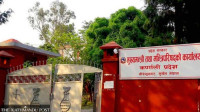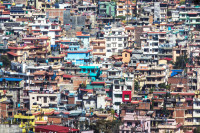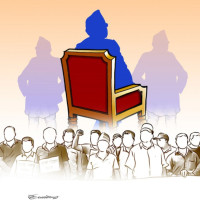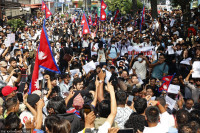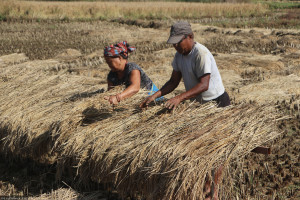Opinion
Service, please!
If there are some establishments that have done well and expanded, they have done so based on innovation
Sujeev Shakya
Whenever I attend a function at a hotel in Kathmandu or spend a night away at a getaway destination close to the Valley, I cannot avoid observing the way service is delivered at every step of the way—be it the guy who serves tea or the housekeeping staff who speaks loudly on the phone when a conference is going on. I also continuously reflect on the days when I began my career at the Soaltee Hotel, which then was an Oberoi managed property, and the way the benchmarks for service were defined. I have developed this obsession for observing the services as I check into many hotels and restaurants. Today portals like Tripadvisor have become a platform where people co-create content, and the focus generally remains on service. As the basic design of hotel rooms is becoming homogenous and there is greater similarity in restaurant menus, the only differentiator is service.
Supply situation in Nepal
Nepal’s entry into the global tourism market was as a high-end destination. So automatically, the friendly and smiling Nepalis were a major comparative advantage for Nepal as rich tourists from the US and Europe started to visit. Later in the ‘hippie-age’, the differentiator remained good service. You could smoke pot freely in many parts of the world, but in Kathmandu, you could do it differently. Hang out with the folks who owned small places in the by-lanes of the then Freak Street and also have nice conversations with the people that served you. When Thamel began to blossom, people came back to their favourite watering hole or restaurant because they knew the folks with whom they could bond. Tourist knew of dilapidated infrastructure, the health hazards and limited options, but they still came. Even now, there are remnants of the old service culture in a few of the iconic Thamel institutions.
The advent of multiparty democracy brought about the worker unions that were exploited by the political parties, creating disruptions in enterprises in the name of workers’ rights. People who did not know the difference between a refrigerator and an oven started to become key union leaders without ever working in a hotel. On the ownership side, traders found a business card stating their association with a prestigious hotel or restaurant. Many people who never perhaps had the love for travel or hospitality suddenly became hotel and restaurant owners. Then the service charge row began in the early 2000s, and the owners realised how they could manipulate it for some extra bucks. With this, the downslide of the hospitality industry began. People who provided great service and pathetic service got the same share of service charge. Frustrated, many good workers left Nepal, some of whom you can meet at restaurants and hotels in the Middle East, the UK or the US. The disruption on the tourism business post 9/11, the insurgency and the frequent closures (bandas) by political parties never helped the cause of better service in Nepal. The client profiles also changed and the need for better service plummeted.
Changing customer profile
The hotel and restaurant business only delivers best if there are discerning clients who want the best and are willing to pay for it. From personal interface with the clients, the profiles changed to interface with the person who made the decision on where a conference would be held or in which hotel the dinner would be hosted. The mushrooming of development agencies post the 1990s saw hotels and restaurants seeing more customers for junkets, trainings, seminars and conferences. Then the advent of financial institutions—be it banks or cooperatives—became the next big spending segment. Decision-making shifted to the guy who decided on procurement. Incentive structures started to become critical. Like the night bus passengers who have to eat wherever the driver deems fit, the decision structure changed.
Customer feedback was not cared for as the establishments learnt how to keep the decision-makers happy. Service expectations plummeted and low level of service stopped being noticed. For example, development workers who attend scores of events a year at different establishments have no service expectations, because when they have to pay from their own pocket to take their family out, they would never visit these establishments. Service only improves and benchmarks are recalibrated when the customer demands the best service for the best price. Establishments started to compete on price and not on service. The change in profile of international tourists does not help in this regard either, as more price sensitive segments of Indian and Chinese tourists who make Nepal their first foreign destination are the only ones increasing.
In the long-term
Many people in the hospitality industry tell me that there is no use in investing in service because the customers do not value them. But looking at the past couple of decades, if there are some establishments that have done well and expanded, they have done so based on innovation and keeping service quality intact. Chandan Kayastha and his chain of Roadhouse Café along with the Temple Tree Resort and Spa in Pokhara can be taken as examples. More of such people can raise the bar and others will follow suit—similar to the way basic layout and design of eateries changed post the Jhamel era.
Recalibration will only ensure that in the long run, entrepreneurs and workers can make more money for the same time they devote to the business. Else, customers not caring for service and providers not wanting to provide better service in an ecosystem where powerful decision-makers are indifferent will only plummet any chances of Nepal increasing the quantity and quality of tourists. This is not only a necessity but an opportunity too as the global tourism industry is being recalibrated by travellers who love to share experiences online.
www.sujeevshakya.com




 13.12°C Kathmandu
13.12°C Kathmandu
